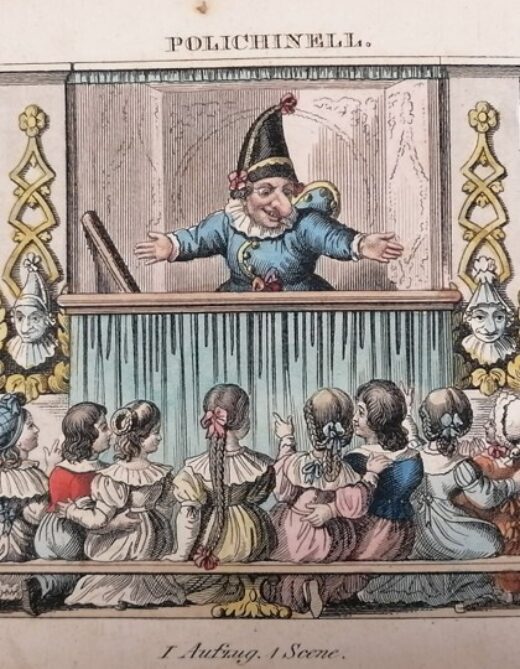
Printed
24 pages
Der siegreiche Held Polichinell
Kleinkinderbuch
This early publication in German puppet theatre proves that plays for glove-puppets circulated around Europe. The main character is named Polichinell – à la française. At the end of the play, he is also about to be awarded the French Legion of Honour for having killed the Devil. However, the succession of scenes and the publication format (illustrations accompanied by the text of the play) reflect the influence of Punch shows, which George Cruishank’s engravings for The Tragical Comedy, or Comical Tragedy, of Punch and Judy popularised across Europe. A few years later, Polichinell would also influence Carl Reinhardt’s Warhaftiges Casperltheater. Finally, the mention of Kleinkinderbuch (small children’s book) demonstrates that puppet theatre was beginning to be played for younger audiences. In 1853, the opening by puppeteer Josef Leonhard Schmid (in partnership with playwright Franz von Pocci) of a theatre in Munich specifically for children would confirm this trend in German-speaking countries.
A character kills all of his opponents
Polichinell argues with Pierrot and beats him to death with a stick. Then he kills an infant whose screams were bothering him, along with the nanny – Gänsehals. Polichinell shows more affection for his kitten, but the cat almost chokes because Polichinell feeds him without restraint. The apothecary, who heard the cries, arrives; Polichinell kills him too, because he suggested that his hump could be a deformity that should be operated on. The superintendent Spürnase arrives as well to determine what is happening in the house, and ends up being killed too, just like the two police officers that came to arrest Polichinell. As for the executioner Knüpfauf, he is hung to his own gallows by Polichinell. Finally, the Devil appears. Polichinell fends for himself, and when his opponent thinks him dead, he gets back on his feet abruptly…and kills him with a single stroke.
Publications and translations
Der siegreiche Held Polichinell, ein Schwank in zwei Aufzügen, mit 10 illuminierten Kupfern. Leipzig: Baumgärtners Buchhandlung, 1843